We all know Christmas is about more than gifts, so lets just skip that whole conversation and get right to talking about just how excited I was to receive one particular gift this year……my very own clay pot!
Avid readers will remember that I’ve been pining for one of these for a long, long time and have resorted to using all manner of western bakeware in its’ stead.
No more shall I simmer soup in a brownie pan! Now, the donabe makes it’s debut!
It was gifted to me by Jeffs’ parents, Mike and Nancy. I cannot believe how well they did at picking out this adorable little pot! The maple leaf design is a specifically Kyoto design, which makes me even happier. Seriously, there was a moment after unwrapping it where I thought I might cry.
“Donabe” is a contraction of the words “do” meaning clay or earthen, and “nabe” meaning pot. (Thank you to commenter Naoko for this translation, as I thought that it was a combination of “don” meaning bowl and “nabe” meaning soup made in a clay pot.) I was really excited to make a nabe for Jeff and I for lunch yesterday so I looked up how to cook with one online only to discover that it has to be seasoned before you can cook with it! Apparently, the donabe is very porous and covered in tiny hairline cracks that need to be properly sealed or else you risk damaging the pot when it hits high heat.
(Based on instructions I found on KyotoFoodie) Here’s what to do: First, make sushi rice!
I made a cup of rice and added about 3/4 of it to the empty donabe along with enough water to fill it about 80% full. Typically then you would cook it for about an hour over a gas stove eye, however we have an electric stove which is not good for a donabe. It gets too hot and the heat is uneven, it could shatter while cooking.
Instead I put the pot in the oven with a baking tray on the rack below it to catch any boil-over. I started heating it to 200 degrees and just kept upping the heat every 20 minutes or so just so that it wouldn’t get too hot too fast and break. Once I got it up to 425 degrees, I let it cook for about an hour. When it comes out, you have a thick gluey rice porridge!
Now, if I had made this with stock instead of water, I’d have what is called okayu, the Japanese equivalent of chicken soup. It’s commonly eaten for breakfast all over the asian continent and goes by many names: okayu, jook, congee, byohk, bubur, juk, and many more. So good with an egg cracked over the top and stirred in!
Anyway, this was not the delicious okayu, this was basically glue. I spooned it up over the rim to seal the edges while they were still warm.
I let it sit like that for about 20 minutes until the donabe was cool enough to pick up. Then I just rinsed it out thoroughly and dried it well. It’s important to make sure the donabe is absolutely 100% dry on the outside, especially the unglazed bottom, before using or it may break when exposed to high heat. For this reason it’s best to hand dry it and then let it air out upside down for several hours.
I can’t wait to use this little guy! I also got a book full of amazing traditional hot pot meals to learn from.
I wanna make everything in there!
Jeff and I are taking a trip to an asian market today to load up on some items that are hard to find in other stores. Wait til you see what I cook up with my new donabe!




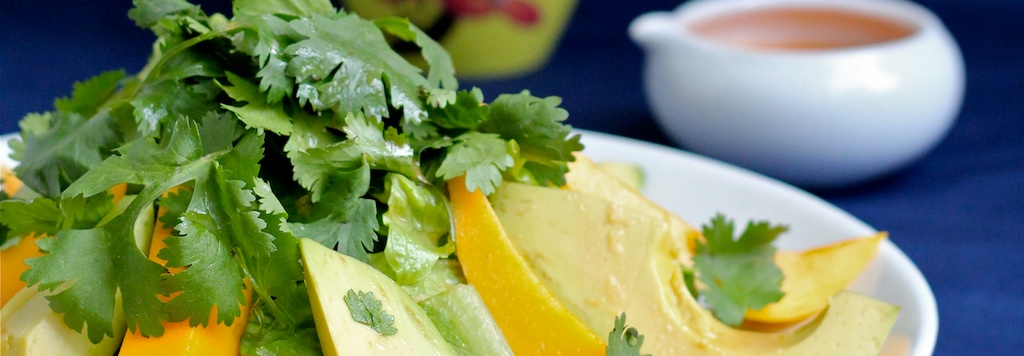
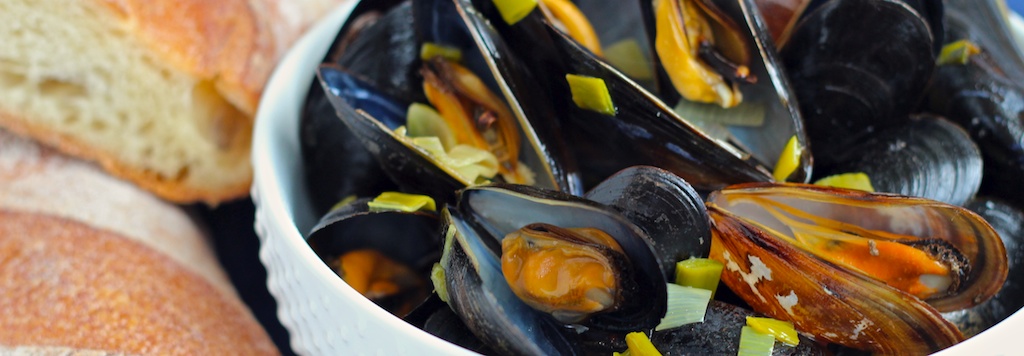
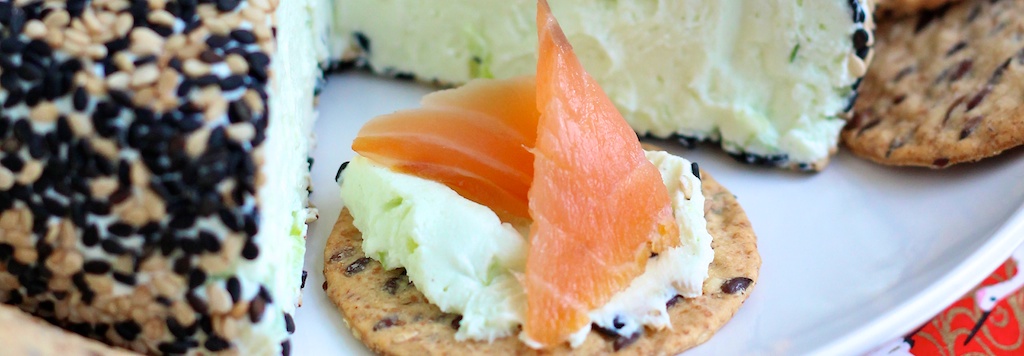
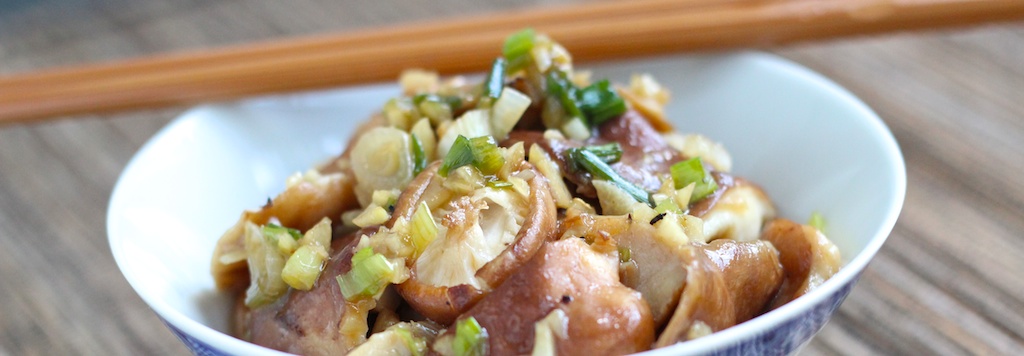
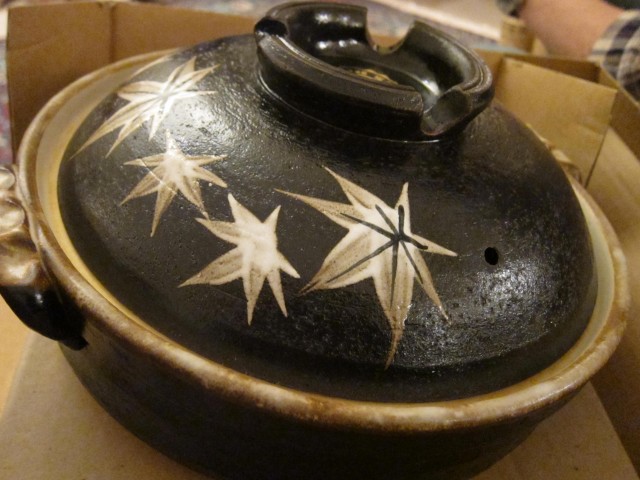
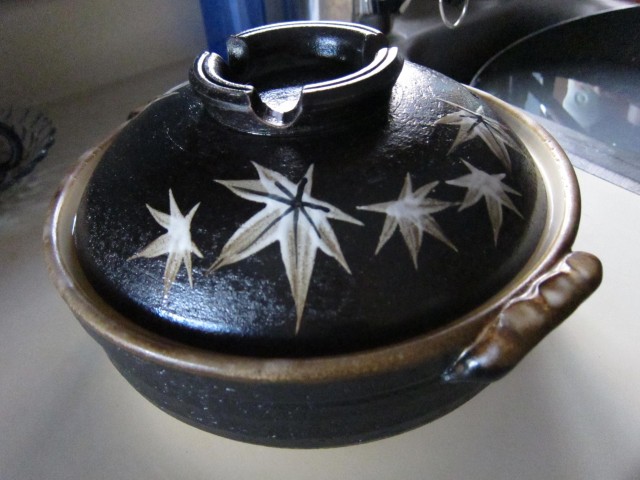
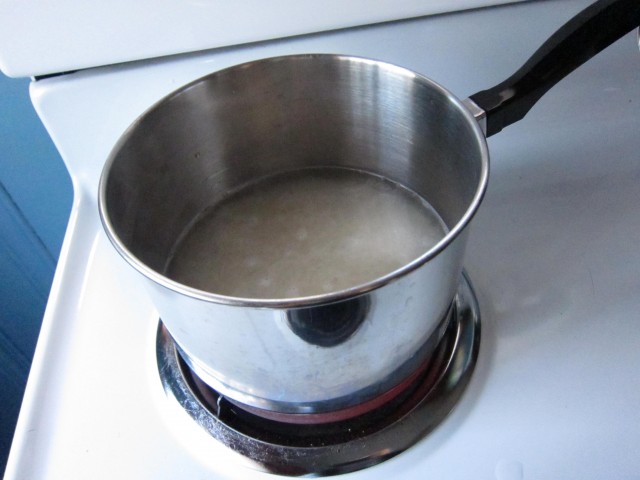
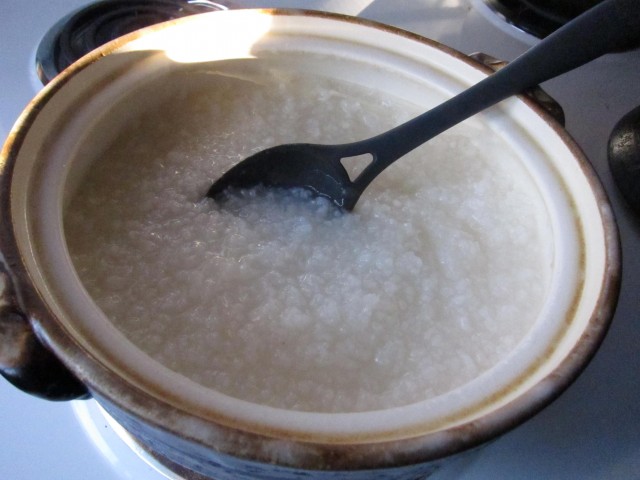
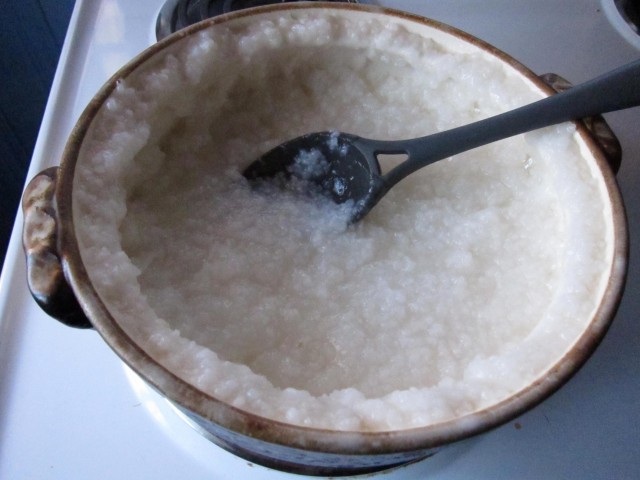
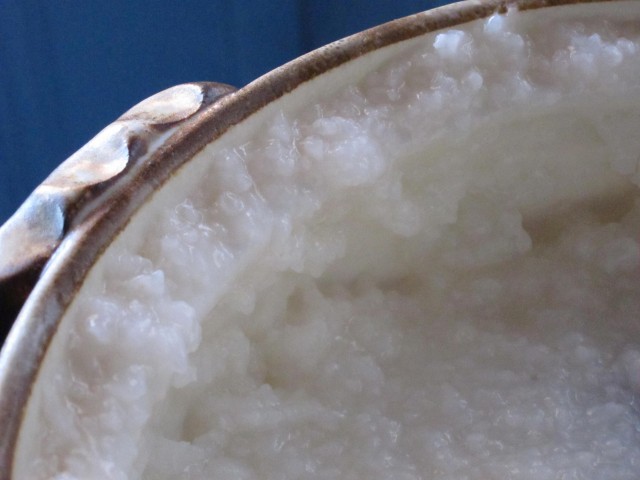



Dear Alayna,
It’s nice to meet you and congratulations on your first donabe!
And, welcome to the donabe world…I do many donabe cooking, too:-)
The word “Donabe” actually consists of two characters…”Do” (meaning, clay, or earthen) and “Nabe” (pot). “Don” has a different character and it normally refers to a serving bowl (like a rice bowl).
Hope you will enjoy many wonderful dishes with your new donabe!
Sincerely,
Naoko
Hi Naoko! Thank you for this correction, I’ll definitely update the post to include it. I should have done more research first, I thought it was obvious but obviously my Japanese is still not very good! I’ll enjoy making some of the delicious nabe you have on your site. Thanks again!
Pingback: Tomato market and a monkfish nabe | Thyme Bombe
Hello and thanks much for mentioning my site, KyotoFoodie in your article. I am glad to see that you are enjoying cooking with your donabe too!
Thanks so much for the helpful advice. I just got my first donabe in the mail today and I want to care for it correctly!
Awesome! I’ve had mine for about 2 years now and I think it might be time to re-season it. One of my favorite kitchen toys, for sure.
Hi
I have the same pot so cute! Have you used it to cook food in the oven? I wasn’t sure if the instructions said that we could use it for oven cooking since everything was in Japanese.
I have used it in the oven with no problems. I always just start it on a lower heat setting and then raise the temp after it’s had time to warm up a bit. Things tend to burn quickly in it on the stovetop, so the oven is a great way to use this!
Good to know, thank you! Also have you cooked any acidic foods like lemon or tomato based dishes in it? I was kind of worried since it’s made of clay.
Hmm…good question. The only acidic thing I can think of that I put in it regularly is rice vinegar. I’m sure it’s fine to cook acidic foods in as long as it’s well sealed, and I would say you’d probably want to reseal it more often if you regularly cook acidic things in it. I don’t know for sure, but that’s what I would do.